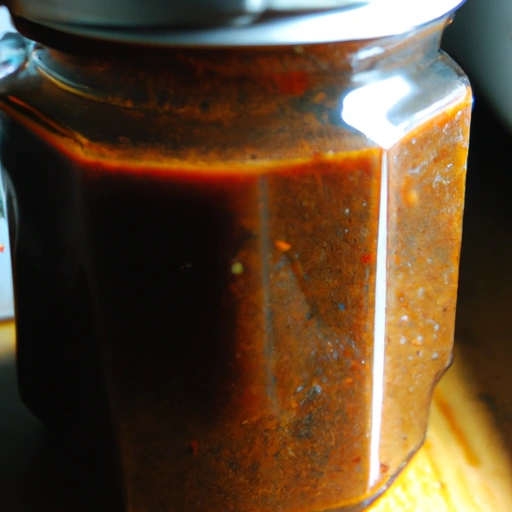Hot Bean Paste
Description

Hot bean paste, also known as spicy bean paste or 'la doubanjiang' in Chinese, is a savory and spicy condiment commonly used in Asian cooking. It is made from a blend of fermented broad beans, soybeans, salt, rice, and various spices. The paste is well-known for its deep red color, thick texture, and its capability to add a robust, piquant flavor to dishes. It often contains a mixture of chili peppers, which imparts a characteristic heat that can range from moderately spicy to intensely hot.
Common uses
Hot bean paste is widely used as a seasoning in marinades, stews, and stir-fries. It is also a key ingredient in many traditional dishes, such as mapo tofu, hot pot, and Sichuan noodles. The paste can be diluted with broth or water to create a spicy sauce or used as a condiment to add a kick to vegetables and proteins.
Nutritional value
Calories
A typical serving of hot bean paste (1 tablespoon or about 15 grams) contains approximately 20 to 25 calories.
Protein
The protein content in hot bean paste is generally around 1 to 2 grams per serving.
Fat
Hot bean paste contains minimal fat, usually less than 1 gram per serving.
Carbohydrates
Carbohydrates in hot bean paste are primarily from the beans and rice used in its production, with about 3 to 4 grams per serving.
Vitamins
This condiment may contain trace amounts of vitamins, particularly B vitamins from the fermentation process.
Minerals
Hot bean paste can be a source of minerals such as iron and potassium, though in relatively small amounts.
Health benefits
While hot bean paste is known more for its flavor than its health benefits, the fermentation process may contribute beneficial bacteria to the gut microbiome. Additionally, capsaicin, the compound that gives chili peppers their heat, has been associated with health benefits like improved metabolism and reduced inflammation.
Potential risks
As with many fermented and spicy products, hot bean paste is high in sodium, which can contribute to increased blood pressure if consumed in large quantities. Those with sensitivities to spicy foods should also use it sparingly to avoid digestive discomfort.
Common recipes
Hot bean paste is a star ingredient in recipes like Sichuan mapo tofu, hot and sour soup, and Sichuan beef. It is also used in various dipping sauces and marinades for meats and vegetables.
Cooking methods
The paste can be incorporated into dishes through stir-frying, simmering, or as part of a sauce base. It should be cooked briefly to release its flavors but not burned.
Pairing with other ingredients
Hot bean paste pairs well with ingredients that can stand up to its bold flavor, such as pork, beef, mushrooms, tofu, and eggplant.
Summary
Hot bean paste is a flavorful ingredient that can transform a dish with its unique combination of savory, salty, and spicy notes. It has historical roots in Chinese cuisine but has been adopted by various culinary traditions around the world. While it packs a punch in terms of flavor, it should be used in moderation due to its high sodium content and the potential for causing digestive discomfort in those not accustomed to spicy foods.